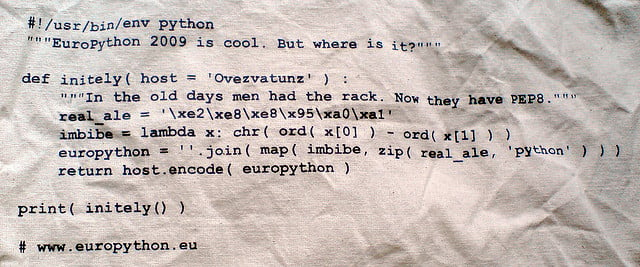What is Code Switching?
Table of Contents
Thomas Guest/Flickr–Erm, not that kind of code
Are you multilingual? Then you probably know what code switching is.
Code switching occurs when a speaker goes back and forth between two or more languages or language varieties within a single conversation. It is quite common amongst multilingual people. During code switching, the uses of both or all languages become syntactically and phonologically appropriate.
Can’t picture it? Watch a toddler code switch between Indonesian, French, and English with his mom and dad:
The difference between code switching and pidgin or creole is that code switching happens when a person is fluent in all languages spoken. A Pidgin or creole language is a third intermediate dialect created when speakers do not share a common language.
Not a Language Gap but Language Precision
According to All Things Linguistic, many people are under the notion that code switching occurs when a speaker is not able to express a thought in one language and thus switches to another, but analysis has shown that code switchers are usually speakers with a high degree of fluency in both of the languages, who simply wish to find the best word that reflects their meaning.
Different forms of code switching have been created to designate where they may occur. Here are some of them:
Inter-sentential switching denotes a switch outside the clause. This means saying one sentence in one language, and the next in another language, like the young boy in the video.
Next is intra-sentential switching, which occurs within one sentence.
Tag-switching, which is a form of intra-sentential switching, is when only a tag phrase or word is switched.An example is kuenjoy (the English word enjoy with the Swahili prefix ku, which means ‘to’).
Spanish + ___________
Though code switching is informal and unsystematic, there are some forms of it that have been popularized. Spanglish, the synthesis of Spanish and English, is spoken mostly in Latino communities in the U.S. and increasingly in Latin American countries. Portuñol is a mixture of Portuguese and Spanish, spoken on the border of Brazil and its Spanish-speaking neighbors as well as on the border of Spain and Portugal.
Other less popular – but equally interesting – linguistic interactions include Belgrano-Deutsch and Llanito. Belgrano-Deutsch (Spanish and German) is spoken in a Buenos Aires neighborhood where huge numbers of Germans settled. In Gibraltar, British English and Andalusian Spanish have combined to form Llanito.
Within Languages
“Language varieties” is another form of code switching that occurs when the speaker alternates between the formal and informal versions of the language.
In the United States, code switching often refers to the switching between AAVE (African American vernacular English) and standard American English. The comedy duo Key and Peele demonstrate President Barack Obama’s deft code switching in the sketch below:
It is to this broader definition of code switching that Gene Demby of NPR refers on Code Switch, a new blog focusing on race, ethnicity, and culture: “Many of us subtly, reflexively change the way we express ourselves…[to communicate and navigate different spaces.]” It is as subtle as the difference between the voices you use to answer work calls as opposed to when talking on the phone with your friends.
Even though this form of code switching remains in one language, I believe it is still of interest to language learners. A major indicator of whether or not somebody is a native speaker is his or her ability to code switch. This ability is ultimately determined by how one learns a new language, and is often not taught in books, but comes from conversing with native speakers.




